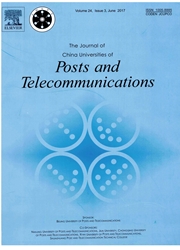

 中文摘要:
中文摘要:
配对方法的一个用户被建议改进虚拟多重输入的产量获得在 3G 的多重输出(虚拟 MIMO ) 长期的进化(LTE ) 。在这研究采取的途径分开了配对进四个步骤的用户:1 ) 用户根据他们的 signal-to-noise 比率(SNR ) 被划分成二个组,并且不同用户配对度量标准为每个组被建议;2 ) 调度程序为按一条给定的规则播送选择一个用户;3 ) 调度程序在每个组在配对的候选人找选择用户;4 ) 调度程序由使用一个边缘的实用程序函数从合作组和转线路组候选人选择最后的配对用户,平衡公平和效率。方法能与高 SNR 改进用户的产量,并且与低 SNR 为用户保证公平,因此它能在 3G LTE 系统被使用。文章提供理论分析和模拟结果支持这个想法。
 英文摘要:
英文摘要:
A user pairing method is proposed to improve the throughput gain of virtual multiple input multiple output (virtual MIMO) in 3G long-term evolution(LTE). The approach taken in this study separated the user pairing into four steps: 1) the users are divided into two groups according to their signal-to-noise ratio (SNR), and different user pairing metrics are proposed for each group; 2) the scheduler chooses a user for transmitting by a given rule; 3) the scheduler searches the pairing candidate for the selected user in each group; 4) the scheduler chooses the final pairing user from the co-group and crossover-group candidates by using a marginal utility function, to balance fairness and efficiency. The method can improve the throughput of users with high SNR, and guarantee fairness for users with low SNR, so it can be used in 3G LTE systems. The article provides both theoretical analysis and simulation results to support the idea.
 同期刊论文项目
同期刊论文项目
 同项目期刊论文
同项目期刊论文
 期刊信息
期刊信息
